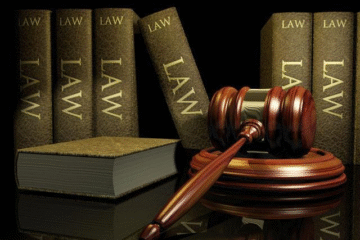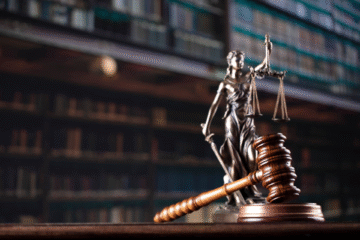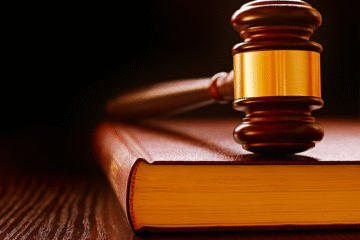
This article is written by Namrata Mondal, a student at the Oxford College of Law, Bangalore, and an intern under Legal Vidhiya.
ABSTRACT
This article presents a comparative study of the Advocates Act 1961 and UK Legal Profession Regulations, which includes the regulatory body of the Indian legal profession, the Bar Council of India, and UK regulatory bodies such as the Solicitors Regulation Authority and the Bar Standards Board. It doesn’t simply analyse both India’s and the UK’s legal system but involves detailed analysis of the key aspects such as their structural features, types of legal practitioners, education structure, diversity, gender role, regulatory authorities, disciplinary mechanisms etc. it also describe the difference between advocates, solicitors, barristers and their functions in legal profession. Moreover, the regulatory bodies, their functions, and objectives have been laid down clearly and transparently, and how they promote ethical professional conduct through their disciplinary committees. The article has been drafted in simple language to be understood by everyone, which starts with an introduction and ends towards a conclusion.\
KEYWORDS
Bar Council of India, AIBE, CLE, Solicitors Regulating Authority, Bar Standards Board, Advocates, Barristers, Solicitors Advocates Act 1961, Legal Services Act 2007
INTRODUCTION
In most countries, every aspect of society has a specific piece of legislation to be regulated and keep pace with growing societal needs. The legal field is not out of that. The legal profession is at the heart of administering justice. The main aim is a society which has access to justice for all . As a vital part of any country, it must be regulated efficiently without creating any ambiguity between the profession and the professionals.
Every democratic country has its governing act for the entire legal system, be it a consolidated act or divided into different parts for different areas of practice. A regulatory framework maintains integrity in the field. Also, an act governing the legal profession binds every aspect of it with the rule of law, thus making it more standard and uniform. An act also promotes the creation of regulatory bodies, which help eliminate professional misconduct by punishing the wrongdoers accordingly and boost ethics in the profession.
India, with its rich cultural heritage, diversity and evolving democratic governance, has made significant efforts to regulate the legal system through the enactment of the Advocates Act, 1961. This act is the main governing legislation made to regulate legal practitioners and provides for the establishment of bar councils at both the central and state levels. The act contains 7 chapters, 60 sections and one schedule. This is not just a piece of legislation, but India’s commitment to hold the legal profession autonomous and independent with dignity in the largest democracy of the world.
The legal profession in the UK is governed by a mix of historic traditions and modern legislative reforms aimed at regulating the legal profession, protecting people and adapting to societal needs. Unlike many other countries, the UK maintains a dual legal profession- solicitors and barristers, each regulated by separate frameworks. Over time, several acts have been passed to reform this framework.
COMPARATIVE STUDIES OF THE ADVOCATES ACT, 1960 AND THE UK LEGAL REGULATION
A detailed and comparative analysis of both has been discussed below-
Structural features-
India- The Advocate Act was enacted to unify and regulate the legal profession across the country. It abolished various grades of legal practitioners such as vakils, attorneys, mukhtas, barristers, and brought all of them under the single umbrella called ‘advocates’. The act also led to the establishment of bar councils at the central and state levels, empowering them with the power to regulate the legal practitioners.
UK- The structure of the UK legal system is a little bit complex. The UK has bifurcated the profession into barristers and solicitors. Solicitors are governed by the ‘Solicitors Regulation Authority’ (SRA), while the Bar Standards Board (BSB) oversees barristers. These bodies function under the broader legislation ‘Legal Services Act 2007’, which has created the ‘Legal Services Board’(LSB) to work towards its objectives.
QUALIFICATION FOR PRACTICE-
India- every law graduate is required to appear for the AIBE exam. Every year the Bar Council of India sets up for the AIBE exam. The Bar Council does not specify or set a time limit to clear the exam, a student can appear many times . After passing the exam, they are provided with a certificate that allows them to practice anywhere in the country, including the Supreme Court. After this, the student needs to enrol themselves in a specific state bar council. And to practice in a state other than their respective state, they need to register themselves again in the new state.
However, as per section 30 of the act, every advocate who has been entitled in a specific state bar council can practice in all courts in the territory. The act extends to the whole of India. Also the advocates can practice in the supreme court or before a tribunal or before any other authority or person who has authority.
UK- students need to obtain a law degree, which could be an LLB or BA-LLB or BSc-LLB degree.
To become a barrister, a student does not need to hold a law degree. As per BSB (Bar Standards Board), if a person holds a degree other than law or obtained a law degree more than five years ago or the degree does not include all seven foundation subjects, the student will need to complete the Graduate Diploma in Law (GDL). The GDL degree must include seven foundational subjects, which are-
- Criminal law
- Equity and trusts
- EU law in context
- contract
- Tort
- property/land law
- Public law( constitutional law, administrative law and human rights law)
Next, the student should join any of the four Inns ( Lincoln’s Inn, Grey’s Inn, Inner Temple and Middle Temple). After this, the student must complete the vocational component of bar training(one to two years), which may include different methods. And they need to follow the Bar Professional Training Course (BPTC) and are required to complete pupillage (one to eighteen months) under a senior barrister. Pupillage(apprenticeship) is the last stage, consisting of a practising period of 6 months and non-practising period, which is also six months.
To become a solicitor in England and Wales, one must hold a qualifying law degree, and those who do not have a law degree need to complete GDL. Previously, there was a common professional examination(CPE), but GDL is the standard one. The Solicitors Qualifying Examination (SQE) was held in 2021, which replaced the GDL and Legal Practice Course (LPC) in most entrances. A student needs to qualify for SQE1 and SQE2, which reflect legal knowledge and practical exposure. Besides SQE, one must hold a degree in any subject or gain experience as described by the Solicitors’ Regulation Authority (SRA) and complete two years of qualifying work experience (QWE). Although there is LPC, SQE is the standard one.
In the case of Scotland, the process is a bit different, following the Scottish legal system. First requirement is a Scots law degree, then a student needs to go through a one year practice which leads to a diploma certificate , followed by a two-year training under a law firm.
Aspiring solicitors in Ireland require a qualifying law degree (QLD); for those with over 30 years of law experience, the Society of Northern Ireland may recognise their prior experiences. Once registered with the law society, a student needs to complete a two-year training programme combined with a vocational course, leading to a postgraduate diploma.
CLASSIFICATION OF PRACTITIONERS
India- legal practitioners were divided into various types, such as lawyers, advocates, barristers, mukhtas, and attorneys previously. But the enactment of this act abolished these confusing categories and introduced the term ‘advocates’. However, section 16 of the Advocates Act, 1961,bifurcated the profession into two kinds of advocates , senior and other advocates. A person with his consent can practice as a senior advocate if the Supreme Court or High Court permits him based on his experience and legal knowledge. A senior advocate is also bound to the rules and restrictions of the Bar Council of India.
UK – The litigators is divided into solicitors and advocates in the UK. Solicitors are generally appointed by law firms and organisations and are paid a certain amount of money. They provided legal advice and support to clients. Unlike barristers, they often work outside the court as well. After hearing the situation from their clients, they conduct initial meetings with the clients and file cases if needed.
Barristers are independent and self-employed. Generally, they are hired by the solicitors to represent the clients in court when an advocate is needed. They hold specialisation in one or more legal areas with in-depth knowledge and expertise.
REGULATORY AUTHORITIES-
India- the Bar Council of India and the respective state bar councils regulate the profession. The Bar Council of India safeguards the rights and privileges of the advocates and sets the standard of professional conduct. Also handle disciplinary committees of each state bar councils and the procedure to be followed by them, supervise state bar councils, provide legal aid for the poor, promotes legal education, oversees universities with legal education, conduct seminar on legal topic by efficient persons, publish legal writings and journals, manage and invest the funds of bar council and handle enrollment of the advocates.
While the state bar councils provide a state roll to the advocates and maintain such roll, promote the growth of the Bar Council of India, publish legal journals, manage its funds, protect the rights and privileges of the advocates, and check professional misconduct by the advocates, etc.
These bodies are largely self-regulatory, enabling advocates to regulate themselves through elected councils.
UK- The main legislation that creates the regulatory bodies is the Legal Services Act 2007. The act created the Legal Services Board (LSB) to fulfil its objectives-
- To protect and promote public interest
- Maintain adherence to the constitutional provisions and obey the rule of law
- Make justice accessible to everyone
- Focus on consumer protection
- Promoting competition in the service
- Making the legal profession independent. Strong. Diverse, efficient
- Increase understanding of people’s rights and duties
- Maintaining adherence to the professional principles.
This legislation establishes SRA and BSB.
Solicitors’ Regulation Authority (SRA) governs solicitors, their educational and other qualifications, and regulates them, while the Bar Standards Board (BSB) look after barristers.
DISCIPLINARY MECHANISMS
India- the disciplinary committee is to be constituted as per section 9 of the Advocates Act, 1961. It consists of three members. These committees are basically formed with the intent to supervise the cases related to the professional misconduct by the advocates, not only this, but they also investigate, raise questions on the matter, gather evidence and hold hearings to determine disciplinary actions. The disciplinary bodies are provided with the powers under section 42 of the Advocates Act, 1961, such as summoning a person, ordering him to produce necessary documents, receiving evidence, etc.
UK- In the United Kingdom, the Solicitors’ disciplinary tribunals (SDT) are one of the disciplinary bodies. It has the power to remove a solicitor’s roll, suspend from practising, impose a fine or reprimand, put restrictions on practice on solicitors for their professional misconduct or other things.
Bar tribunals and adjudication services(BTAS) are there for the barristers. These bodies handle cases of professional misconduct brought by the Bar Standards Board (BSB) against barristers. The system ensures greater impedance and respects public decision-making process in their panels.
CONTINUING PROFESSIONAL DEVELOPMENT/CONTINUING LEGAL EDUCATION
India- in a fast-changing legal environment, every law student and legal practitioner must adapt themselves to the recent developments, trends and legal changes. To maintain their expertise and experience, they need to stay updated. Continuing legal education (CLE) helps bring efficient and standard service to the clients and helps to stay informed about the new legal news and judicial precedents. However, it is not mandatory in India, but still, the Bar Council recommends it. There should be proper infrastructure to ensure the enforcement of continuing legal education.
The Supreme Court in the case of State of Maharashtra v Manuvai Vashi 1995 recognised the need for a continuing and well-structured legal education system, but it was later struck down in the case of Sudheer v Bar Council of India 1999.
UK- Continuing professional development (CPD) is the tool that many countries acknowledge to stay focused and improve skills in many sectors. It is a skill developing model and involves those activities and tasks for professionals to maintain their skills and enhance their abilities. Regulatory bodies in the UK conduct yearly practice and different types of courses to keep the professionals updated with the legal developments, decisions and maintain professional competency.
GENDER DIVERSITY-
India- the Bar Council of India mandates equal qualification and procedure for females and males. The Advocates Act 1961 doesn’t include any provision that promotes a quota system for women advocates. Although the number of women is increasing in the profession and marginalised communities are entering, there remain systematic barriers; women face more obstacles in the profession than men. There are no mandatory rules made to represent and appoint more female practitioners in this field, while the number of female judges in the high court is less than 10% in all the years and less than 35% in the overall system.
UK- there is formal equality and diversity in the legal field in the UK, at least 53% of the professionals are women, 19% are black, asian and marginalised, and 6% are disabled persons. Law firms and regulatory bodies oversee the proper functioning of this regulation.
ACCESSIBILITY OF LEGAL SERVICES-
India- while there have been discussions regarding making the legal profession more accessible to the poor and marginalised, structural reforms and implementation of such intention are not enough. Legal aid systems are still less funded and unequally distributed.
UK- The Legal Services Act 2007 introduced reforms allowing non-lawyers to hold chambers and promoting alternative business structures (ABS), thus making the legal system quick, diverse and innovative. The focus on a centric approach, affordability, and clients’ choice has made significant growth in the profession.
CONCLUSION
the comparative analysis of the Advocates Act 1961 and UK legal regulations reveals a complex interplay between traditions, cultural differences, legal traditions and the evolving needs of society. While both countries are rooted in the common law, they differ significantly in their structure, enforcement and reforms.
India’s Advocates Act 1961 presents a unified approach and emphasis on self-regulation of the profession through the Bar Council, which serves as the backbone of the legal practice. However, it faces criticism due to a lack of transparency, external oversight and slow adaptation to the changing needs of society.
On the other hand, the UK legal system has embraced a more modern and consumer-centric approach, independent regulatory bodies, and a clear separation between regulatory and representative functions. The Legal Services Act 2007 not only acknowledges reforms but also focuses more on providing improved services and prioritising public interest.
REFERENCES
- Legal Services Act 2007 https://www.legislation.gov.uk/ukpga/2007/29/contents
- Advocates act, 1961https://www.indiacode.nic.in/handle/123456789/1631
- How to become a lawyer in the UK https://www.kingseducation.com/kings-life/how-to-become-a-lawyer#step-1
- Bar council of england and wales https://www.barcouncil.org.uk/becoming-a-barrister.html
- Solicitors regulation authority https://www.sra.org.uk/become-solicitor/
- The law society https://www.lawsociety.org.uk/career-advice/becoming-a-solicitor
- Solicitors disciplinary tribunal https://solicitorstribunal.org.uk/about-us/
- Sudheer v Bar Council of India 15th March,1999https://indiankanoon.org/doc/1029236/
- Bar council of india https://www.barcouncilofindia.org/home
- All India Bar Examinationhttps://www.allindiabarexamination.com/
Disclaimer: The materials provided herein are intended solely for informational purposes. Accessing or using the site or the materials does not establish an attorney-client relationship. The information presented on this site is not to be construed as legal or professional advice, and it should not be relied upon for such purposes or used as a substitute for advice from a licensed attorney in your state. Additionally, the viewpoint presented by the author is personal.




0 Comments